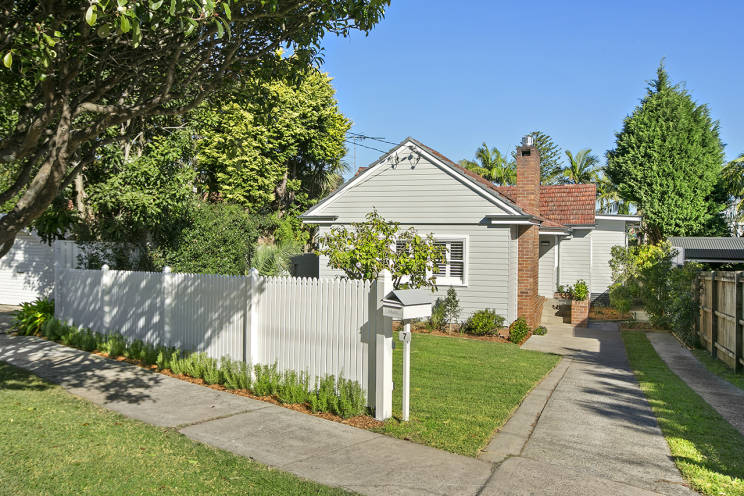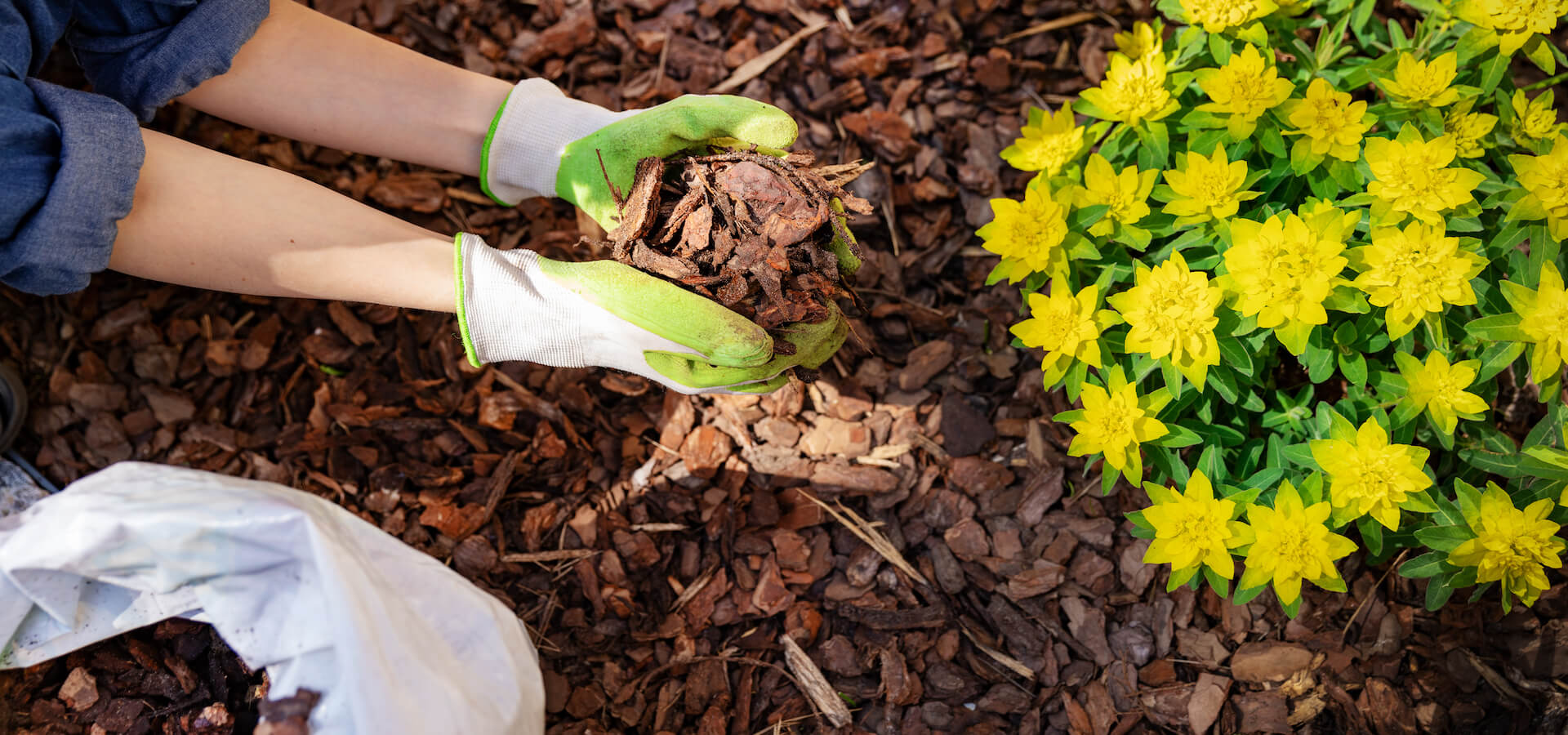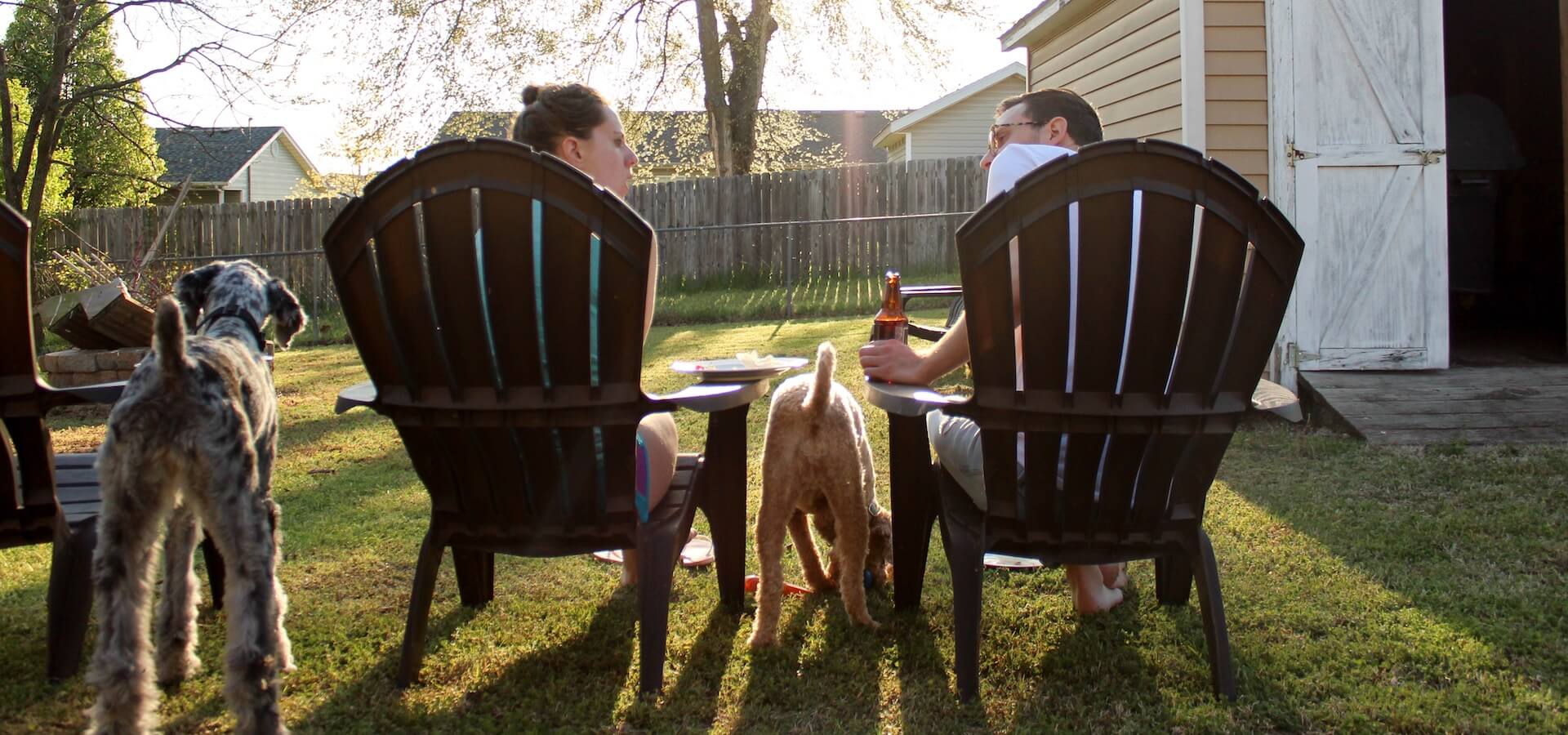10 outdoor jobs to complete in February

February is one of the warmer months in Australia, but it’s also the month the kids go back to school after the long summer break. This makes it a great time to get some key jobs done. Take advantage of the longer, warmer days to clean up hardworking spaces around the house, especially outside. Here we look at 10 jobs that can sometimes be overlooked or considered just too hard to deal with.
Topics in this article:
1. Clean up the front of house
First impressions count and a clean house exterior adds enormous kerb appeal. The ideal tool for cleaning the exterior of your home is a high-pressure washer or Gerni gun. Before you get started:
- make sure all the windows and doors are securely closed,
- wear protective glasses to prevent debris getting in your eyes,
- check the pressure on the machine, you don’t want to strip the paint!
- Pre-treat soiled areas with a cleaning solution, then spray at a downward angle and keep the hose moving side to side.
While you’re cleaning, avoid spraying the windows as the pressure could result in breakage.
TIP: If you have a problem with mould and mildew, consider adding a weak solution of hydrogen peroxide to the mix.
2. Strip back the barbecue
The barbecue often carries the bulk of the cooking load during the holidays, especially at Christmas, so a thorough clean is called for in the new year. When you’ve finished cooking your last holiday-mode meal, give the hotplates and grills a brush down while the barbecue is still warm, in order to remove the larger pieces of food residue.
With one burner on low, place a large baking tray filled with water onto the hotplate or grill. Close the lid and let the pan slowly come to the boil. The steam will loosen food residue, making the barbecue easier to clean. Get to work scraping, washing and wiping down the hotplates. Spray these with oil prior to heating to season the cooking surface.
TIP: Clean a stainless steel finish on a barbecue with warm soapy water and polish down with a soft cloth.
3. Organise your garage
A well-organised garage should reflect your current life, not your future intentions. Nor should it be filled with past hordes. Try to work from a clean slate. Take everything out of the garage, categorising as you go. Sort the clutter into piles for sale or the charity shop and take it there immediately before you change your mind.
Give the space a good clean, then designate spaces for various items, using as much of the vertical and ceiling space as possible – try to get everything off the floor and onto shelves. Consider installing pegboards on the walls to make it easy to add hooks and hangers – you can then adjust them over time to suit your needs.
If you’re lucky enough to have exposed trusses, use them. If not, consider installing ceiling-suspended shelving. Use labelled storage boxes to keep everything organised and easy to locate. Finally, don’t rush this process, set aside a weekend to do a thorough job. It will be worth it.
4. Make your garden shed work for you
The garden shed is used for garden tools as well as all manner of household items that need to be out of harm’s way. It’s also a gathering place for all sorts of creepy crawlies, so empty it, give it a good clean and then spray with a long-term surface spray.
If you have the room, install adjustable shelving and use labelled plastic bins to sort smaller bits and pieces. Hang baskets on the backs of doors for gardening gloves and smaller tools.
Long-handled tools are best stored on a wall-mounted tool hanger. Use magnetic bars to quickly hang and organise metal gardening tools, or use pegboards to customise storage and change on the fly. Install overhead storage racks or pulley systems on the ceiling to haul things out of the way. And lastly, store toxic chemicals safely out of reach of little people on a high shelf above the door.
5. Deal with the deck
Now that summer is on its way out, sweep down the deck with a stiff broom to dislodge dirt and grime, followed by a wash with a solution of mild soapy water, using the broom to give it a good scrub. If the deck is really rough and weathered, consider hiring an industrial sander from a local hardware store.
Oiling and sealing the deck protects against UV rays, which can dry out boards and cause them to shrink. Choose a water-based decking oil with UV protection. These oils are easy to apply and are often mould and fungal resistant.
Apply the oil with a paint roller and give it plenty of time to dry. Depending on exposure to the elements, you may need to add another coat or two. Well protected decks probably only need this treatment every two years to keep them shipshape.
6. Weed between and clean pavers
Paved areas take a lot of foot traffic and can collect dirt and grime, not to mention mould, mildew and moss. The great news is that cleaning them is an easy job that doesn’t have to be undertaken more than a couple of times a year, if you do the job properly.
Start by removing any weeds growing up between the pavers, then hose down the pavers to loosen dirt and grime. Saturate any surrounding lawn or garden and then, using a stiff broom or brush, apply a 10:1 solution of water to liquid pool chlorine to the pavers and scrub them down. Leave the solution to do its work for about 20 minutes, then hose away the residue. Finally, apply some weed killer between the pavers to prevent regrowth.
TIP: It’s important to do this job on a sunny day as the sun breaks down the chlorine.
Check out the contemporary gardens on Houzz for more inspiration
7. Look after your lawn
Water the lawn regularly and deeply. Deep roots keep the lawn lush and green. During the hot month of February, about five centimetres of water per week is required to maintain a healthy lawn. Water in the late evening or early morning to reduce water loss to evaporation.
During summer, mow at the highest setting and never mow a wet lawn. Leave the grass clippings on the lawn to return nutrients to the soil and lawn.
Fertilise with a mixture of 30-50 per cent slow-release and 50-70 per cent fast-release fertiliser. This not only gives the lawn an instant boost but also adds nutrients for the coming weeks. Use an organic fertiliser to improve the health of the soil.
Make the job easier with the help of a landscape contractor
8. Mulch for sustainability
Particularly in the hot, dry months, mulch is key to water conservation in your garden. A good mulch stops the soil from drying out and eroding by trapping water in the soil. Mulching will also prevent weed growth, which competes for moisture and nutrients. It really is one of the best things you can do for your garden. Mulching also gives a garden a clean and finished look by filling in the spaces, giving it a uniform look.
Opt for organic mulch over inorganic as it will break down and add nutrients to the soil. It will also improve soil structure and drainage and encourage earthworm activity. The depth of mulch depends on the type, but a rule of thumb is between two to six centimetres.
9. Prepare good compost
Composting is one of the easiest gardening jobs you’re likely to undertake. Do it right and most of the hard work will take care of itself. All you really need is a container that is easily accessible for regular turning of the contents.
An easy, low-maintenance compost comprises both brown and green plant matter. Brown matter can comprise shredded newspaper, wood chips and dried leaves. The green matter is your organic kitchen waste and lawn clippings. Every time you add green waste, add some brown waste to keep a good moisture balance.
Taking care of the compost is relatively easy: rotate the container over and over or turn the pile with a pitchfork every week or two, and make sure the contents are slightly damp. Get this process right and in a few months you’ll have some beautiful, dark, rich and crumbly soil ready to juice up your garden.
10. Plant a herb garden
This idea is optional, but late February could be a good time to start planning and planting. Rather than letting a whole bunch of veggies and herbs rot in the bottom of your fridge, grow your own so that you can pick and use what you need. Start by finding a sunny spot. Most plants need a minimum of five to six hours of sunlight a day.
Prepare the soil by adding rich organic matter like compost, manure and fertiliser to make the soil nutrient rich. Turn the soil, adding some fresh garden soil, mixing the old with the new. Give the soil a good water and let it ‘cure’ for a couple of weeks, removing weeds as they pop up. Once the soil is ready, plant your seasonal crop: beans, broccoli, brussels sprouts, carrots, cauliflower, chives, cucumber, leeks, lettuce, oregano, parsley and silverbeet are best for planting at this time.
TIP: If a heatwave hits, you may wish to install some shade cloth to protect your herbs and veggies.
What are your outdoor cleaning, sorting or gardening tips post the summer holiday season? Share them with us in the comments section below.
This article was originally published on the Houzz.com.au. Read the original article here.
Written by:
Robin Braithwaite is a Houzz Australia Contributor. She is a freelance writer who loves beautiful interiors, sumptuous textiles, great design and social media as a means to connect with the design community.

Houzz connects homeowners and home professionals with the best tools, resources and vendors. Founders Adi and Alon built Houzz as a place to browse and save beautiful photos of inspiring homes. A place to find and hire the right design and construction professionals and connect with others who have been there too. Houzz has now grown to a community of millions of homeowners, home design enthusiasts and home improvement professionals around the world. No matter your project, Houzz is the best way to find design inspiration, research and hire home professionals, and discover the best products for your project.
We'd like to hear from you!
1 comment
February is definitely a busy month for the DIY-ers and for those who’ve been putting off cleaning all the mess left by the holiday season.










